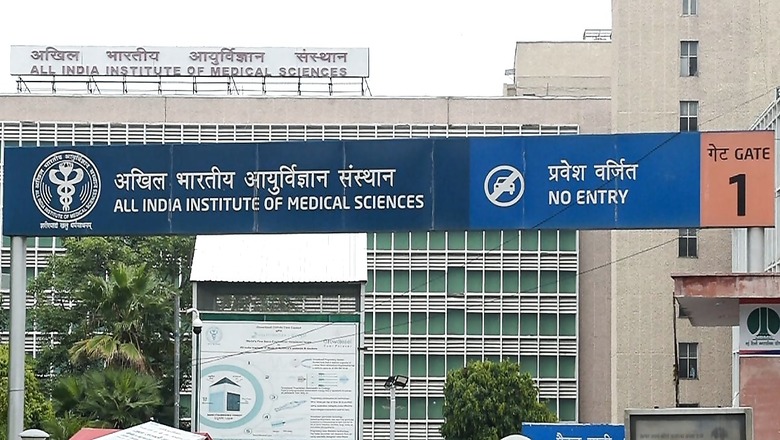
views
The Centre on Thursday said media reports linking the seven positive samples of mycoplasma pneumoniae bacteria detected by AIIMS New Delhi to the recent surge in pneumonia cases in China, are “misleading and inaccurate”. The ministry of health and family welfare said mycoplasma pneumoniae is the most common bacterial cause of community-acquired pneumonia, and the cases at AIIMS are not linked to the rising respiratory infections among children in China and some other countries.
Media reports claiming detection of bacterial cases in AIIMS Delhi linked to the recent surge in Pneumonia cases in China are misleading and inaccurate. Mycoplasma pneumonia is the commonest bacterial cause of community-acquired pneumonia. Pneumonia Cases in AIIMS Delhi have no… pic.twitter.com/rZkpgPEwv1— ANI (@ANI) December 7, 2023
According to a global surveillance study published in The Lancet Microbe journal, these seven samples tested positive for the infection at AIIMS between April and September. Mycoplasma pneumoniae has been linked to the recent surge in respiratory ailments among children in China. The same bacteria is behind 172 cases in Singapore, which is the highest in Asia.
The ministry, however, said the recent media report in a national daily linking the seven bacterial cases and the recent surge in pneumonia cases in China is ill-informed and provides misleading information. It said the cases were detected as part of an ongoing study at AIIMS and are no cause for concern.
“It is clarified that these seven cases have no link whatsoever to the recent surge in respiratory infections in children reported from some parts of the world, including China. The seven cases have been detected as a part of an ongoing study at AIIMS Delhi in the six-month period (April to September 2023) and (are) no cause for worry,” the ministry said in a press release titled ‘Myths vs Facts’.
The ministry further said not a single case of mycoplasma pneumonia was detected in the 611 samples tested since January till date by real-time polymerase chain reaction (PCR), as part of the multiple respiratory pathogen surveillance by Indian Council of Medical Research (ICMR). These tests were conducted at the department of microbiology of AIIMS New Delhi and included mainly severe acute respiratory illness (SARI, which comprised about 95 percent of these cases), it said.
Mycoplasma pneumoniae bacteria is the reason for nearly 15 to 30 percent of all such infections, and such a surge has not been reported from any part of India, the ministry said. Authorities are in touch with state health departments and are keeping a close watch on the situation daily, it added.
What the study found: Re-emergence of M pneumoniae
The first global prospective surveillance study of M pneumoniae was initiated in April 2022. Data was obtained from 45 sites in 24 countries from the four UN regions: Europe, Asia, the Americas and Oceania. The study found that incidences of M pneumoniae as detected by PCR tests were significantly higher in Europe and Asia than in America and Oceania, and higher than those observed in previous testing periods in the same UN regions since the start of the prospective surveillance.
Overall, M pneumoniae was detected by PCR in 1,067 out of 1,49,980 (1.49 lakh) tests during the six-month period from April to September. The most frequent detections in Europe were from Denmark (436), Sweden (145), Switzerland (132), Wales (49) and Slovenia (41); and in Asia, the most were from Singapore (172).
From a total of 67 tests conducted at AIIMS Delhi as part of the study, seven samples tested positive. Out of these, one case was detected through PCR test while six cases were detected through IgM Elisa test.
“These global prospective surveillance data show the re-emergence of M. pneumoniae in Europe and Asia more than three years after the introduction of Covid-19 pandemic restrictions,” the authors of the study noted.
“This delayed re-emergence is striking because it occurred long after non-pharmaceutical interventions (NPIs) were discontinued and because it is, to our knowledge, a phenomenon unique to this pathogen,” they said.
What happened to M pneumoniae during Covid?
In March 2020, the introduction of NPIs against Covid-19 resulted in an abrupt ending of these epidemics and a marked decline in M pneumoniae detection worldwide. Compared to the pre-pandemic incidence, there was a significant reduction in the first year after the implementation of NPIs similar to the incidence of other respiratory pathogens, the researchers said.
A further unprecedented, yet substantial, reduction in the incidence of M pneumoniae was observed in the second year, when other respiratory pathogens resurged as an indicator of community transmission, they added.
First data from this surveillance yielded a sustained very low incidence of M pneumoniae in the third year from April 2022 to March 2023. Though at very low levels, an increase in case numbers was noted in some countries in the last months of the third year (January to March 2023), which subsequently warranted increased vigilance, the researchers said.
“In countries where M pneumoniae has re-emerged, case numbers are comparable to pre-pandemic (endemic) numbers. The further development of the re-emergence should be monitored to evaluate whether case numbers will escalate to epidemic levels or result in an exceptionally large wave of infections as was observed for the resurgence of other pathogens,” the authors noted.
(With PTI inputs)



















Comments
0 comment